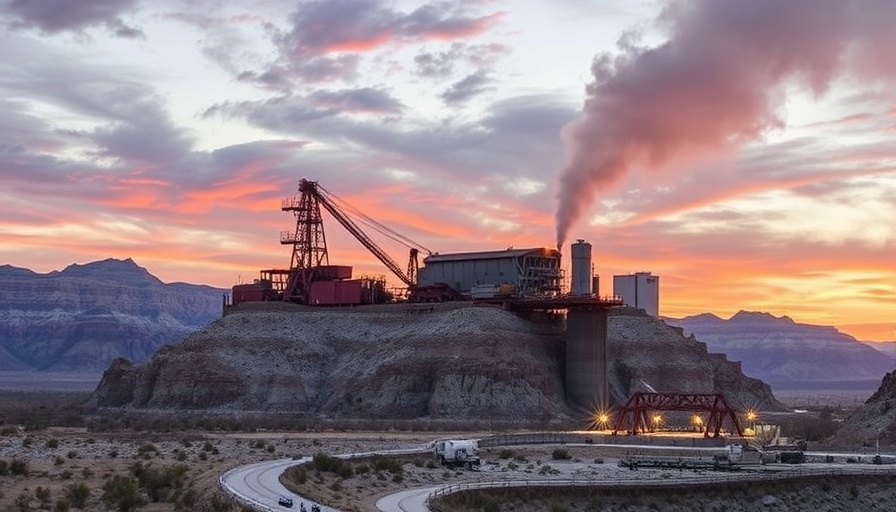
Discovering Nevada’s Ingenious Engineering Innovations
Nevada's stunning landscapes not only tell stories of natural beauty but also of human ingenuity. Among the most striking examples of this are the 19th-century engineering projects that helped build Nevada's economic foundation. Think of the scenic Marlette Flume Trail, where hikers traverse a historic flume route that once facilitated essential water supplies to the silver mines of Virginia City. This iconic pathway high above Lake Tahoe is a testament to the state’s engineering prowess and its vibrant history.
The Birth of the Comstock Lode: America’s Silver Revolution
In 1859, the discovery of the Comstock Lode marked a pivotal moment in American mining history. Suddenly, Nevada became home to immense wealth in silver and gold, pulling thousands of eager prospectors and engineers into its rugged terrain. During its peak, the Comstock Lode generated hundreds of millions in silver, catapulting Nevada into an economic powerhouse and even supporting the Union during the Civil War. But this wealth came at a cost—transportation of people and supplies in this remote region posed significant challenges.
Tackling Logistical Challenges: Water and Resources
Constructing a bustling settlement like Virginia City required not just a fabled silver mine, but an intricate network for sourcing logistical necessities. With the town perched on a mountaintop in a desert, basic supplies like food and fresh water were not readily available. Initially, mule teams and wagons transported sustenance, but as the settlement expanded, it required a more sustainable solution. Enter the Marlette Flume—a remarkable 50-mile flume and pipeline system engineered in the early 1870s that delivered fresh mountain water from Marlette Lake down the Sierra Nevada slope, ensuring miners and townsfolk had the resources they needed.
The Role of the Virginia & Truckee Railroad
In tandem with the flume, the completion of the Virginia & Truckee Railroad (V&T) in 1869 revolutionized transportation in the area. The railroad not only provided a lifeline for supplies but also connected the mines to important processing centers and markets across the nation. Although it ceased operations in 1950, the V&T was revived in 1976 as a heritage railroad, granting new visitors today the chance to experience the scenic route from Carson City to Virginia City, linking them to the past.
The Historical Significance of the Marlette Flume Trail
Now, the Marlette Flume Trail serves as a remarkable hiking and mountain biking route. As visitors trek the trail, they can appreciate both the stunning vistas of Lake Tahoe and the remnants of the original flume system. It's not just a path through nature but a reminder of the innovation and determination that built Nevada's famous mining heritage. The synergy between such infrastructure and outdoor activities showcases how history and adventure can coexist, making it particularly relevant for residents of nearby cities like San Diego, who crave both excitement and historical insights.
Preserving Engineering Excellence: Lessons from the Past
Understanding the history behind these engineering marvels can inspire contemporary problem-solving. The ingenuity displayed in overcoming the environmental challenges of the past can fuel current innovation in sustainable technology and infrastructure. Today’s society continues to grapple with challenges related to water supply, energy usage, and resource management; lessons from Nevada’s mining history provide an invaluable frame of reference.
Conclusion: Experience History and Nature Together
For residents of San Diego and beyond, the engineering marvels of Nevada offer not just a glimpse into the past, but also opportunities for adventure. Visiting sites like the Marlette Flume and riding the V&T Railroad connects the thrill of exploration with the rich historical narrative of America's mining endeavors. So, if you’re seeking a blend of historical insight and outdoor beauty, consider planning a trip to explore these legacies of ingenuity!
 Add Row
Add Row  Add
Add 




 Add Row
Add Row  Add
Add 

Write A Comment